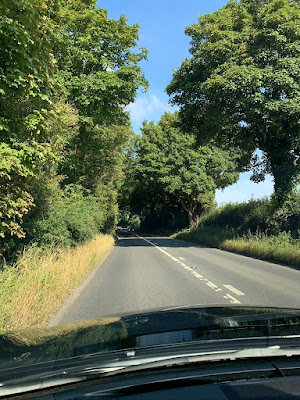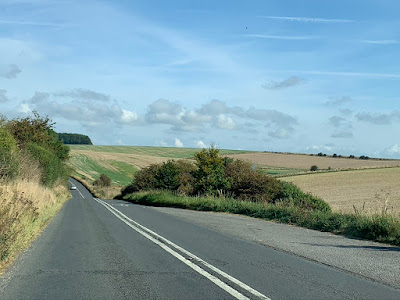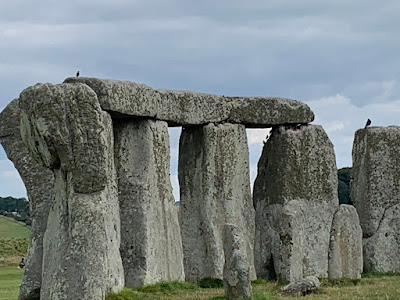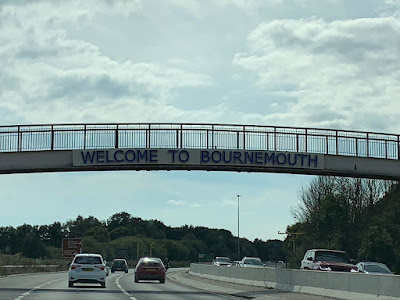We had about an hour's drive from Bournemouth through Salisbury to Stonehenge. It was fun to see the countryside, but I have to say that hedgerows are the bane of my traveler's existence. What we could see was mostly due to rolling hill country. Whenever we were on flat ground, all we could see were the bushes along the side of the road.
We did see some large crop lands with grain

Gigantic stacks of hay bales in the fields
And corn fields. None of these had irrigation.
We learned that there were very few woodlands in this area because of the chalky soil. Its not good soil for trees to grow well. There is some speculation that these open fields were attractive for those people who chose to build Stonehenge.
We were fortunate enough to visit on a day when it was not crowded, and the weather was wonderful. 1 mil visitors a year come to Stonehenge.
Not only does it track the summer and winter soltices, it also predicts moon movement (harder than the sun), and lunar and solar eclipses. After 4000 years, its still accurate regarding when these events will happen. Remarkable.
We walked all the way around the perimeter and just kept on taking pictures. The clouds made the photos particularly interesting.
There are lots of archeological sites around the area. The line in the landscape below is what is left of the 'avenue', an approach to the stones that extended along the solstice alignment. You can see that sheep are grazing on the land.
This is the heel stone. It is made of sarsen hard stone and surrounded by a small circular ditch. It weighs more than 36 tonnes. At summer solstice, the sun rises in alignment with this stone. At winter solstice, it sets over a pillar inside the ring.
Aerial view of the site (from the web). The Avenue and ditch patterns are more obvious from the air.
The birds were right at home in/on the stones. The starlings were roosting there.
There has been a lot of damage (natural and manmade) to the stones over the centuries. You can see the base of the center stone in this picture is damaged. Part of the stone was chipped away for souvenirs. In the 1950's and 1960's major restoration work took place and concrete was added to the base of the stone to keep it upright. Other stones were also supported and straightened with concrete supports and some of the lintel stones were placed atop the pillars again.
There are over 300 burial mounds in the area. You can see three of them in the distance at the horizon of this photo.
There are also 56 'Aubrey holes' - burial sites around the outer ring of the circle. These once held pillars, but they are long gone. There are cremated remains in these post holes.
We've been to two different Christchurches in the past two years (in two different hemispheres).
We've been to two different Christchurches in the past two years (in two different hemispheres).


















No comments:
Post a Comment